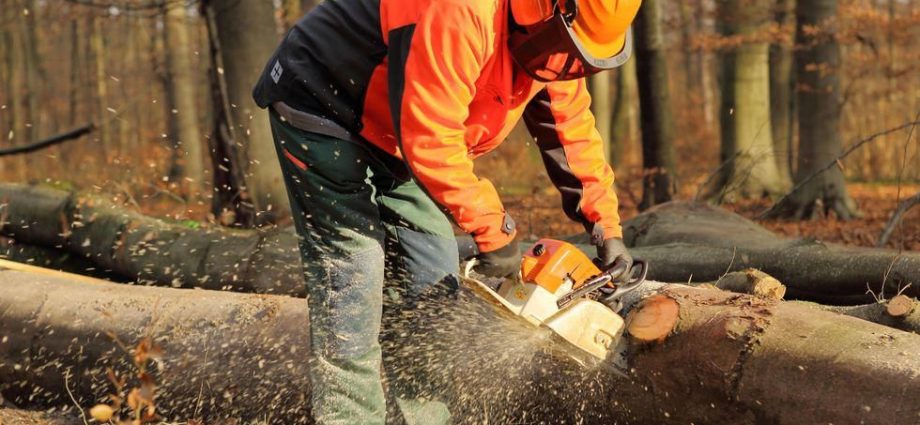FRIDAY, Sept. 17, 2021 (HealthDay News) — Logging and landscaping are the most dangerous jobs in America, a new study finds.
The risk of death for loggers is more than 30 times higher than for all U.S. workers. Tree care workers also encounter hazards at rates far higher than a typical worker.
“This was the first research to look at commercial logging and landscaping services together,” said Judd Michael, a professor of agricultural safety and health at Penn State College of Agricultural Sciences.
“It was a unique and more accurate way to assess fatalities,” he said in a university news release. “The commonality, of course, is that workers in both fields fell trees. They do it using very different methods, but either way, it is extremely hazardous work.”
Logging in Appalachia and other areas with forests on rough, mountainous terrain is largely unmechanized, with workers cutting down trees with chainsaws, standing at their bases. Landscapers, who must control how limbs and branches fall, have to climb trees with chainsaws to cut sections down.
For the study, the researchers combed a U.S. Occupational Safety and Health Administration database for deaths from tree felling between 2010 and the first half of 2020.
Over the period, Michael’s team found 314 deaths. The leading cause of fatal accidents was being struck by a tree, most often in the head.
Falls from heights were the only significant difference between logging and landscaping, Michael said. Bad decision making was a key component of fatal incidents, and in some cases, bystanders were killed due to the actions of others.
The number of tree felling deaths varied greatly from year to year, and no clear trends emerged in the fatality rates, Michael said.
Years such as 2012, 2017 and 2018 with abnormally high damage from Atlantic storms saw high numbers of landscaping deaths that might be tied to storm damage, while 2014 and 2015 had quiet hurricane seasons and few deaths.
“Look at what happened with Hurricane Ida recently, with all the power lines that were down because of downed trees in Louisiana,” Michael said. “We don’t know yet if that will lead to landscape tree feller deaths, but we suspect large storms lead to more fatalities. Utilities can’t restore power without clearing downed trees, so the importance of keeping tree operations safe can’t be overstated.”
Preventing deaths means more than using protective equipment, he said.
“Personal protective equipment is mandated, but that means a hard hat or some chaps on a worker’s legs to stop a saw from cutting through,” Michael said. “But if you have a 1,000-pound limb falling from 10 feet or 50 feet, no equipment is going to protect them.”
And, that, he said, is a key takeaway.
“You can have all the protection you want, but it won’t help you if you get hit by a tree trunk or large limb,” Michael said. “That’s why we need to have better decision making to keep people out of danger.”
He said employers in the landscaping industry should put an extra emphasis on preventing falls for employees working in elevated positions.
“Greater attention to falling object avoidance for persons working around a tree being felled could also prevent fatalities,” Michael added. “Logging companies should strive to adopt mechanized methods for tree felling.”
Deaths from tree felling represent only a fraction of the severe injuries that happen while working around trees, Michael said. By focusing on the cause of fatalities, researchers hope that strategies can be developed to reduce the number of injuries in these jobs.
The study was published Sept. 14 in the American Journal of Industrial Medicine.
More information
To learn more about the dangers of logging, visit the Forest Resources Association.
SOURCE: Penn State University, news release, Sept. 14, 2021
Copyright © 2025 HealthDay. All rights reserved.

